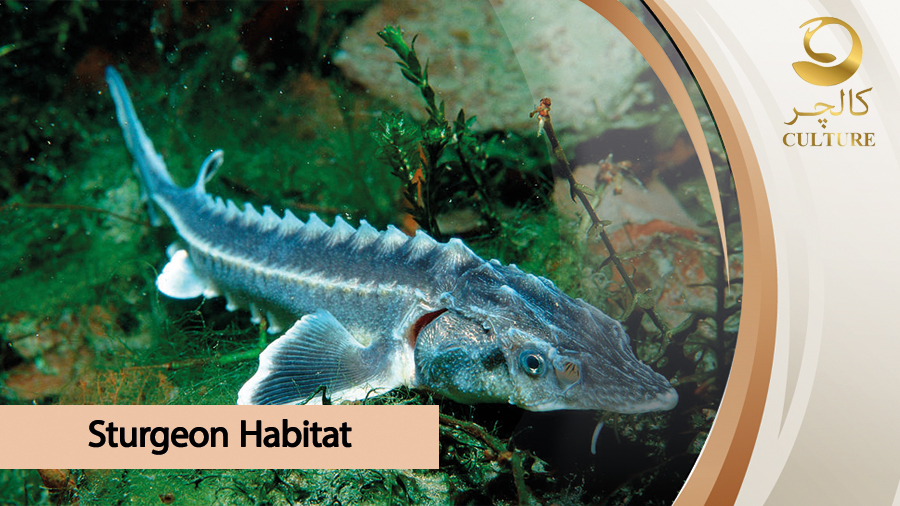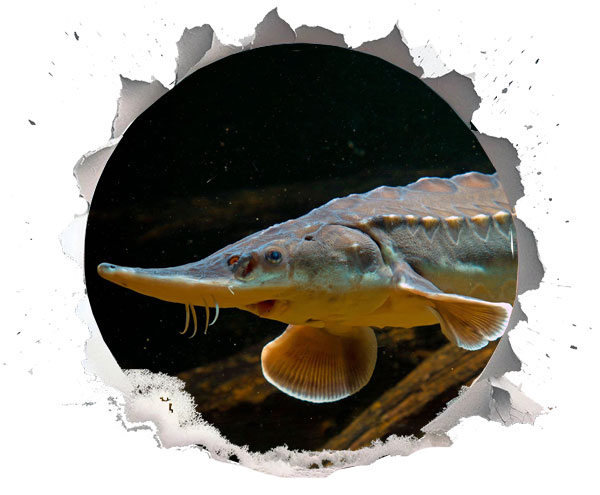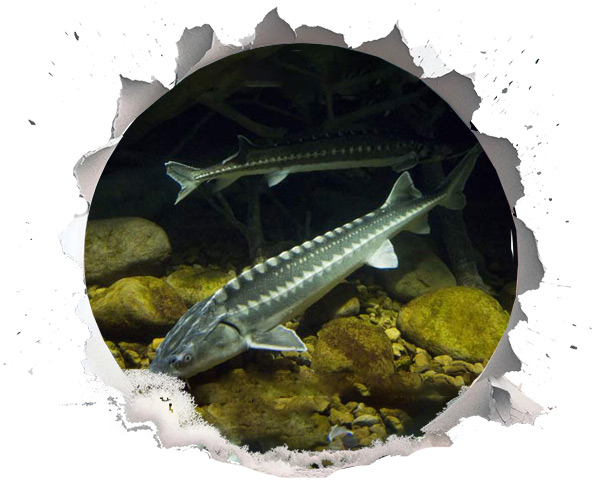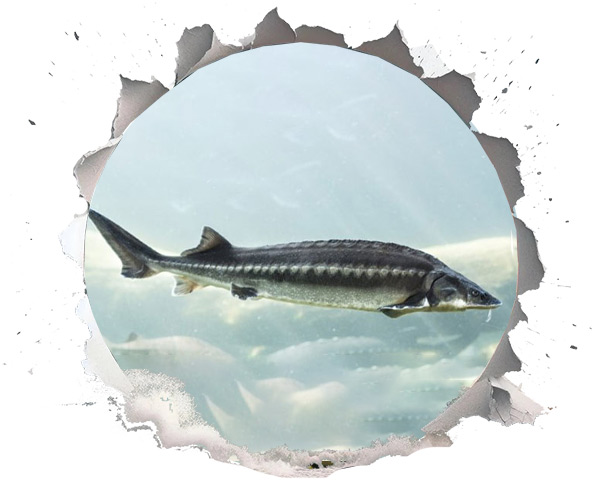Sturgeon Habitat: What Waters Do Sturgeon Live In?

Sturgeons have roamed our planet’s waters for over 200 million years, earning them the nickname “living fossils.” These ancient fish, with their bony plates and whisker-like barbels, are not just fascinating relics of the past; they’re also the source of one of the world’s most luxurious delicacies: caviar. But beyond their gourmet appeal, understanding sturgeon habitat is crucial for appreciating these creatures and the urgent need to protect them. As of 2025, many sturgeon species are teetering on the brink of extinction due to habitat loss, pollution, and overfishing. In this article, we’ll dive into the diverse waters that make up sturgeon habitat, exploring where these remarkable fish live, what they need to thrive, and how we can help safeguard their future. Whether you’re a nature enthusiast or simply curious about underwater worlds, let’s uncover the secrets of sturgeon habitat together.
How Sturgeons Navigate Their World
Sturgeons are masters of adaptation, often leading an anadromous lifestyle; that means they spend much of their adult life in saltwater or brackish environments but return to freshwater rivers to spawn. This migratory behaviour shapes their habitat needs, requiring access to both open seas and clean, flowing rivers. With 27 known species, sturgeons can grow to impressive sizes; the beluga sturgeon, for instance, can reach lengths of up to 7 metres and live for over a century.

This dual existence makes sturgeon habitat incredibly varied. They favour temperate and sub-Arctic regions, where cold, oxygen-rich waters support their slow growth and energy demands. From the murky depths of enclosed seas to the gravelly beds of mighty rivers, sturgeons rely on specific conditions to feed, breed, and survive. Benthic feeders by nature, they scour the bottom for crustaceans, small fish, and shellfish using their sensitive barbels.
Prime Locations: The Caspian Sea and Its River Networks
No discussion of sturgeon habitat would be complete without highlighting the Caspian Sea, the world’s largest inland body of water and a hotspot for sturgeon diversity. Bordered by Iran, Russia, Azerbaijan, Turkmenistan, and Kazakhstan, this brackish lake hosts species like the Russian and Persian sturgeons. These fish thrive in the Caspian’s nutrient-rich waters but migrate upstream into rivers such as the Volga, Ural, Kura, and Sefid Rud for spawning. The rivers provide the ideal stony or sandy substrates where eggs can stick and develop without being washed away.
However, recent reports from 2025 paint a worrying picture. The Caspian Sea’s water levels are declining rapidly, potentially by 5 to 10 metres in the coming years, due to climate change, evaporation, and human water use. This shrinkage restricts access to spawning rivers and disrupts ecosystems, compounding threats from invasive species like the Sea Walnut, a jellyfish-like invader that competes for food and has contributed to the decline of native fish populations. Once teeming with sturgeons, the Caspian now sees drastically reduced stocks, with overfishing and pollution accelerating the crisis.

Nearby, the Black Sea offers another vital sturgeon habitat, particularly for beluga and stellate species. Sturgeons here migrate into rivers like the Danube, Dnieper, and Don for reproduction. The Danube Basin, spanning several European countries, remains one of the last strongholds for wild sturgeons in Europe, though dams and habitat fragmentation pose ongoing challenges.
Across the Atlantic: North American Sturgeon Strongholds
Shifting continents, North America boasts its own array of sturgeon habitats, from coastal waters to vast river systems. The Atlantic sturgeon roams the eastern seaboard, from the Gulf of Mexico up to Newfoundland, spawning in rivers like the Hudson and Delaware. In 2025, positive news emerged from the Hudson River, where endangered shortnose sturgeon populations are estimated at nearly 70,000, thanks to collaborative conservation studies. These efforts highlight how protecting critical spawning and rearing areas can aid recovery.

On the Pacific side, white and green sturgeons inhabit waters from Alaska to Mexico, favouring rivers like the Sacramento and Columbia. Inland, the lake sturgeon thrives in the Great Lakes and rivers such as the Mississippi and St. Lawrence, where partnerships are restoring populations through patient, community-driven initiatives. Gulf sturgeons, a subspecies, stick to coastal bays and estuaries from Louisiana to Florida, facing risks from vessel strikes in their designated critical habitats.
These North American habitats underscore the fish’s adaptability, but they also reveal vulnerabilities. For example, the 2024 stock assessment update confirms Atlantic sturgeon remain depleted coastwide, prompting renewed calls for habitat protection.
Other Global Havens and Environmental Essentials
Beyond these hotspots, sturgeons appear in places like Russia’s Arctic-flowing rivers (Ob, Yenisei, Lena) and Central Asia’s Amu Darya and Syr Darya. Lake Baikal in Siberia hosts a freshwater subspecies, while attempts at southern hemisphere aquaculture occur in Uruguay and South Africa, though no wild populations exist there.

What ties all sturgeon habitat together? Specific environmental needs. These fish prefer water temperatures between 8°C and 20°C, thriving in cold, well-oxygenated flows, think fast-moving rivers or circulated seas. Low salinity is key during spawning, with gravelly riverbeds providing secure spots for eggs. Pollution and reduced water flow from dams can devastate these conditions, as seen in the now-desiccated Aral Sea, where sturgeon habitats were obliterated.
Mounting Threats: From Climate Change to Human Impact
Sturgeon habitat is under siege. Overfishing for caviar has slashed populations, with illegal poaching still rife in regions like the Caspian. Industrial pollution and urban development contaminate waters, while dams block migration routes. Climate change adds fuel to the fire, with marine heatwaves in the Caspian threatening species already classified as critically endangered. Invasive species, including the voracious Sea Walnut, have further disrupted food chains, leading to alarming declines in fish fauna across the Iranian Caspian Basin.

In North America, similar issues persist, with habitat destruction and bycatch contributing to endangered statuses. Globally, over 85% of sturgeon species are at risk, making them the most critically endangered animal group.
Hope on the Horizon: Conservation and Sustainable Solutions
The good news? Conservation is gaining momentum. In the US, bills like the Sturgeon Conservation and Sustainability Act, reintroduced in 2025, aim to bolster protections and support farmers. Statewide plans in Washington and Wisconsin focus on habitat restoration and public engagement. Internationally, CITES regulates trade, while organisations like WWF advocate for marine protected areas and river barrier removals.
Sustainable sturgeon farming techniques are a game-changer, allowing production of non-GMO caviar without harming wild populations. Farms use temperature-controlled tanks, premium non-GMO feeds, and hormone-free methods to raise sturgeons ethically, often releasing juveniles to boost wild stocks. In places like Canada and the US, these techniques blend aquaculture with conservation, ensuring high-quality caviar while easing pressure on natural habitats.

Education plays a vital role too, with workshops, media campaigns, and museums raising awareness about the importance of preserving sturgeon habitat.
A Call to Protect Ancient Waters
Sturgeon habitat spans epic seas and winding rivers, from the shrinking Caspian to the resilient Hudson. These environments not only sustain these prehistoric giants but also support broader biodiversity. As we face 2025’s challenges, like rapid sea level drops and invasive threats, it’s clear that action is needed now. By supporting sustainable practices, including innovative sturgeon farming techniques that yield non-GMO caviar, and backing conservation initiatives, we can help ensure these fish continue to grace our waters for generations. If you’re inspired, why not explore local wildlife efforts or choose ethically sourced caviar, like Culture Caviar, next time? After all, protecting sturgeon habitat isn’t just about saving a species, it’s about preserving a piece of Earth’s ancient story.

